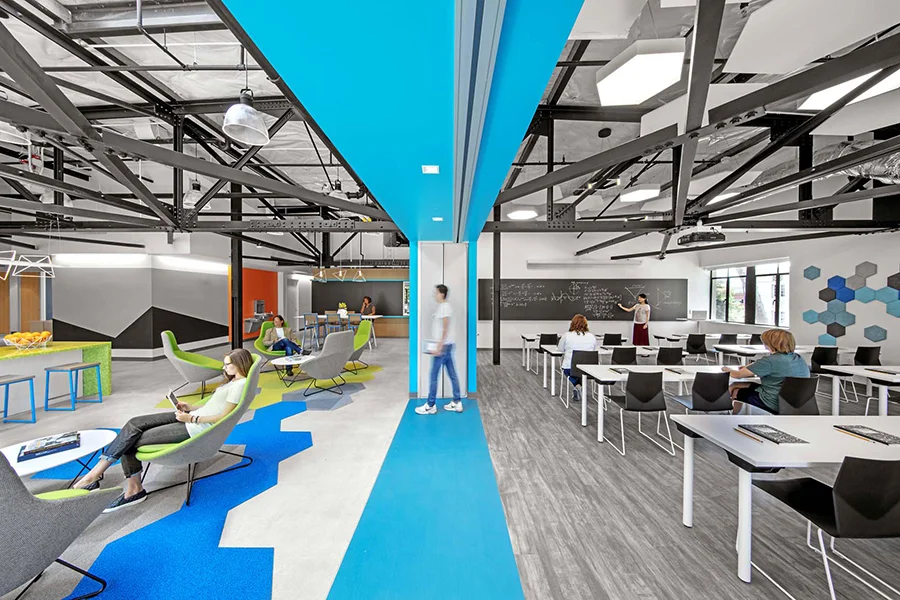Despite huge technological advances, there is, and always will, be a fundamental need for office space which stimulate human connections and interaction.
Gen-Z’s Impact on Workplace Design
Gen-Z, born between 1995 and 2012, makes up 20 percent of the United States population and will comprise 30 percent of the workforce by 2030.
How office design trends in different countries stack up and feed off each other
While they all face broadly the same challenges in managing technology, communications and economic conditions, no region produces the same results in terms of office design and working culture.
Employers Want Flexible Workplace Strategy
Announcing the Winners of the ASID’s Outcome of Design Awards!
The winners of the first Outcome of Design Awards set a new bar for design research, practice, and evaluation.
6 Design Tips to Keep Employees Energized
Interiors are not enough to win the war for talent
I regularly hear of people with multiple job offers taking a job with a lower salary, rather than accepting a role in a company that doesn’t reflect their ideals. This decision can be influenced by office design and facilities, career development options, corporate culture and much more.
Advances In Light Quality Provide Designers With A New Tool For Creating Human-Centric Workspaces
As more modern lighting upgrades in commercial buildings are focused on reducing energy usage, we must also remember that lighting quality is equally important.
Through the Lens of Technology: Part II
Space design oftentimes is led with the aesthetic of the space-how can we make it trendy and cool? But another component that is vital to the efficiency, productivity and well-being of employees is the technology that enables those same employees to perform in their positions.
The negative entropy of workplace design and management
If you create an agile working environment and empower people to move around it and work with whom they want and in what way they want, what do you then do when the data tells you they should be working with other people and in other ways? How do you resist the descent into order?
Proceed With Caution: A Clear Understanding Of Where You Are Headed And Why
Excerpts from HOK’s upcoming whitepaper “Tech Workplace: From Frontier to Center Stage.” An investigation of the forces reshaping the tech industry and how workplace design can position companies for success.
Data-Driven Design: Leveraging Occupancy Evaluations To Inform And Create Effective Workspaces
U.S. WORKPLACE SURVEY 2019
Gensler’s data suggests that access to coworking directly correlates with effectiveness and experience when offered as another choice of where to work, but not a replacement for the main office.
This group is building a support network for women in office design
Harnessing Company Culture and Wellness for Workplace Design
A Think Tank talk, hosted at HOK’s Los Angeles office, challenged the assumptions behind common workplace paradigms, like plunking a café or gym in an office.
Why Your Conference Room Table Is Probably Bad For Business
It seems implausible, but your conference room table—and those your firm has very likely designed for clients—could very well be bad for business.
Why Measuring The Human Condition Results In Better Space Design
How do we create better workplace design solutions? If we unpack the words, we find hints about where we should begin.
How good workplace design can foster creativity
"Get rid of the open-plan office" says Space10 co-founder Simon Caspersen
Once believed to promote sociability and collaboration among employees, open-plan workspaces have been found by many to produce the opposite effect.
How Real-Time Data Is Revolutionizing Workplace Design
A closer look into the role IoT is playing in workplace design and how businesses are already benefiting from it.

























